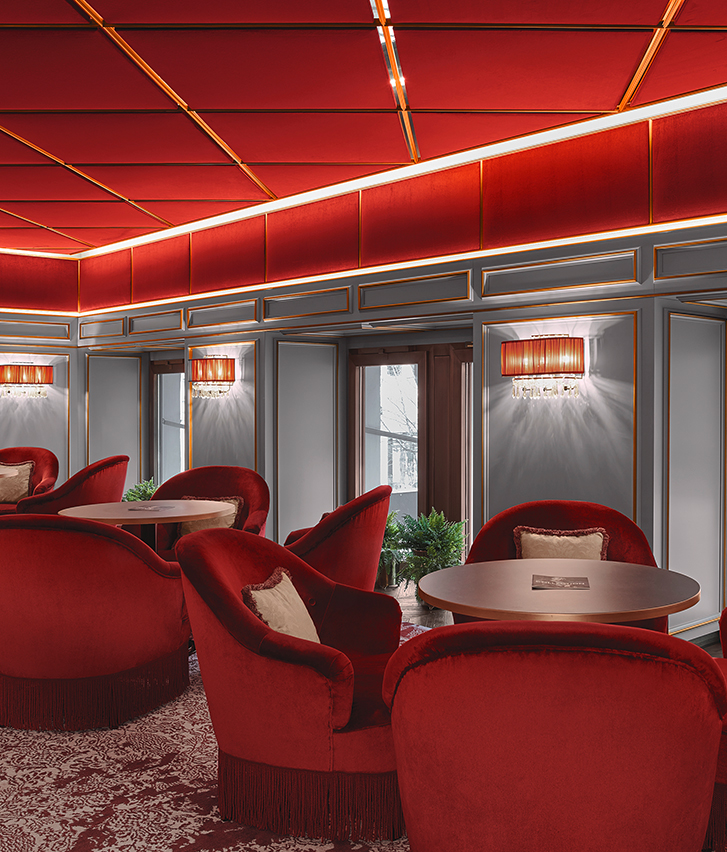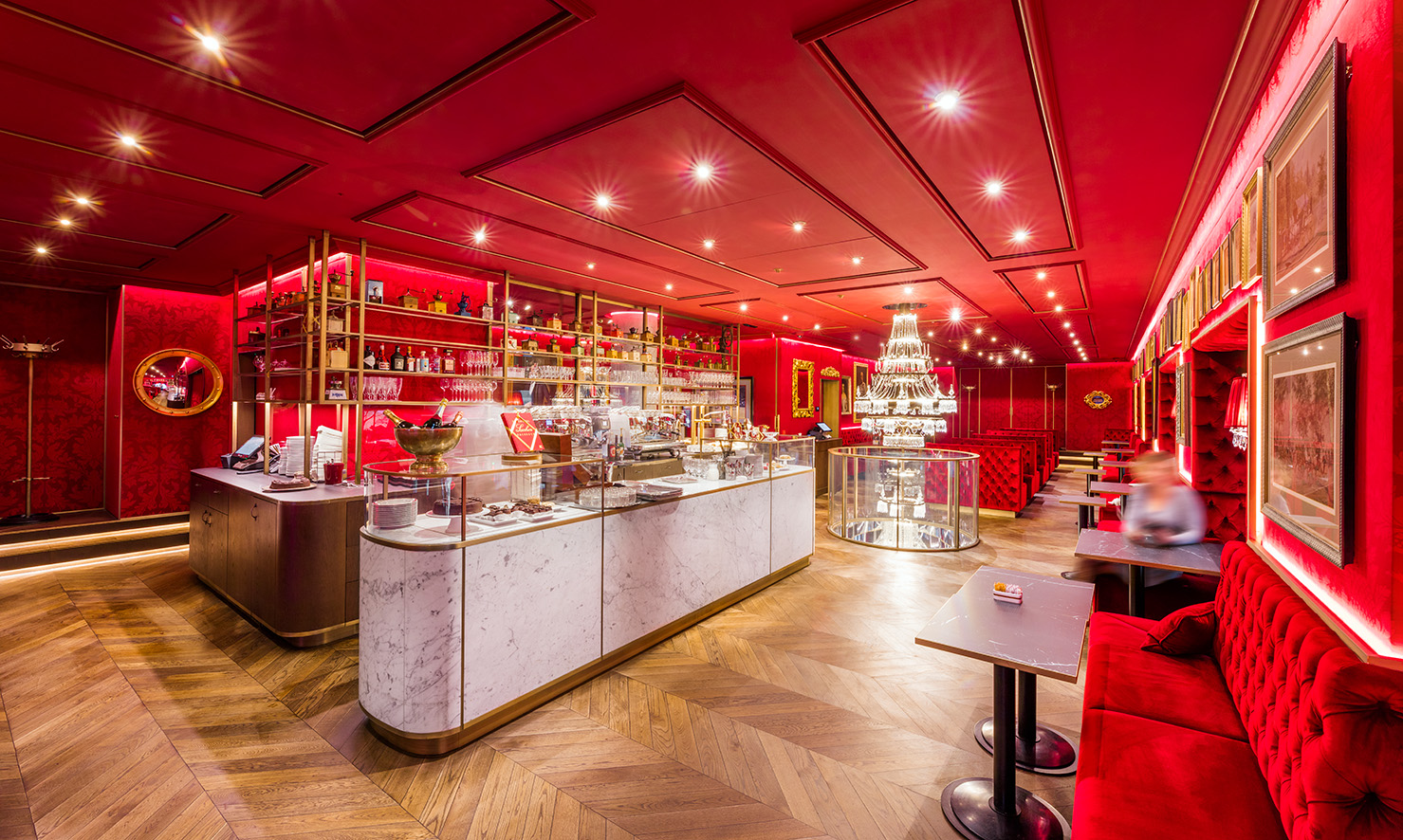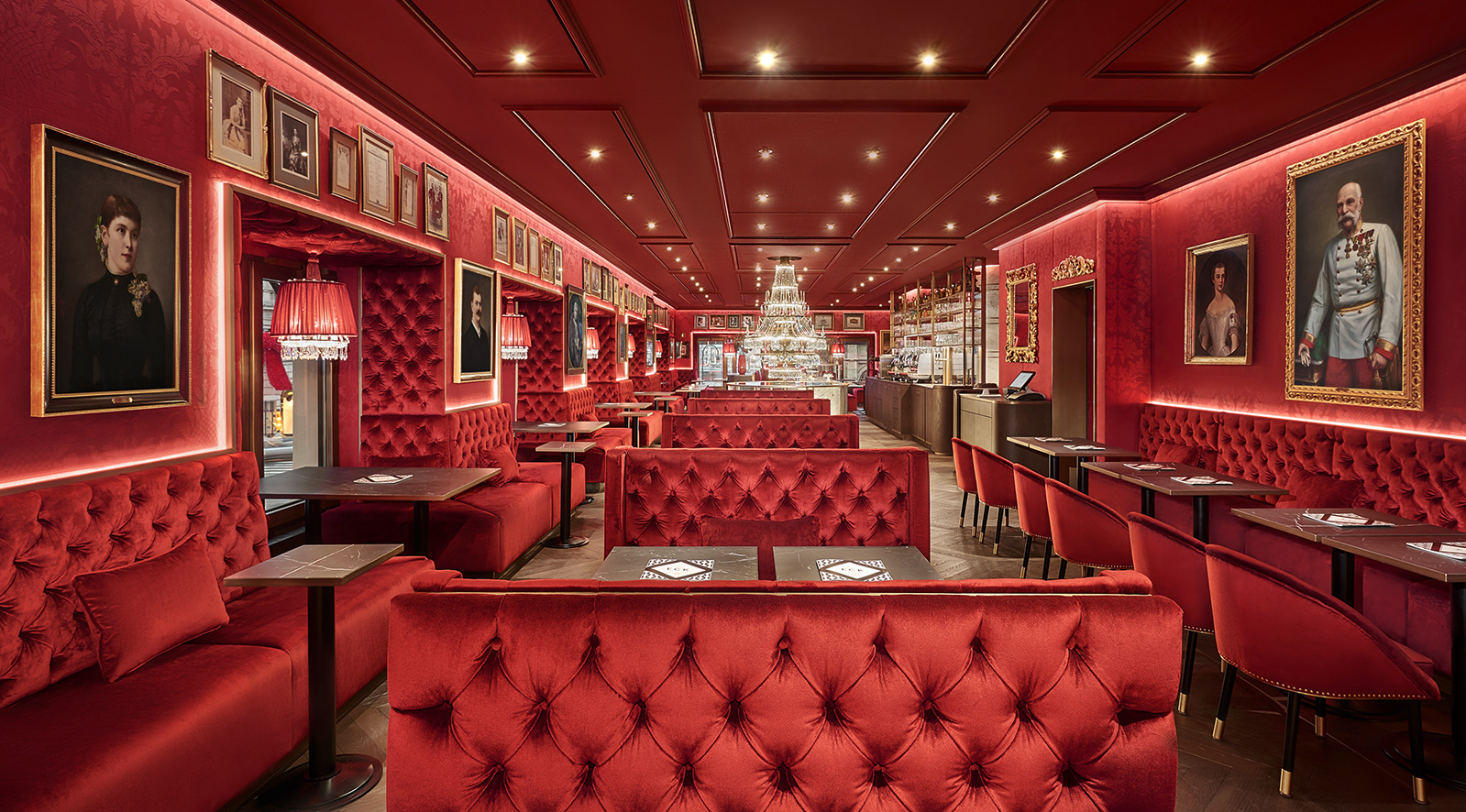Art of Pioneering
The human dimension? Empathy.
There are people who shape spaces – and those who shape stories.
Erich Bernard creates atmospheres, adds radiance to traditional buildings,
and shapes places like the Café Bel Étage of the Hotel Sacher
– inspired by icons, realized with precision.
Erich Bernard creates atmospheres, adds radiance to traditional buildings,
and shapes places like the Café Bel Étage of the Hotel Sacher
– inspired by icons, realized with precision.
Photo Credits: BWM Designers & Architects, Renée Del Missier, Haiden Alexander
The author Stephen King always writes his books with a particular person in mind. Someone whose feelings and reactions he knows exactly. What guides you in your work?
Erich Bernard
Ideally, there is a guiding image or a guiding feeling. Take the Salon Sacher as an example. Josephine Baker was the spark there. In 1928, during a stay in Vienna, she spent an afternoon signing embossed postcards in the Café Sacher – that was the image I had in my mind. So, for the Salon Sacher, we started from the spirit of Josephine Baker, a very lively, dynamic mood that at the same time has something timeless about it. After the first sketch, everything flowed naturally: the worlds of Vienna and Josephine Baker merged with the world of elegance. And in execution, fortunate coincidences also played a role.
What kind?
Erich Bernard
During research, we came across a drawing by Josef Hoffmann from the same era. It was unclear what it was originally intended for, but for us, it fit perfectly – we translated it into the floor pattern. We also played with the House on the Lido, designed by Adolf Loos in the 1920s for Josephine Baker, legendary for its black-and-white stripes. Then, during the work, we uncovered a hidden stucco ceiling from the house’s original period – an unexpected gift we immediately embraced. By cutting a large opening five meters high, we reintroduced the ceiling in a domed effect.
Your collaboration with the traditional Sacher brand began, however, with the redesign of the Café Bel Étage, formerly Sacher Eck. How much leeway can one allow oneself with such a charged brand?
Erich Bernard
That was something completely different from the Salon Sacher. From the family that has run the hotel for over 90 years, there was, through Alexandra Winkler, the wish to make the historicity tangible. At the same time, there were functional challenges: the first floor, which had been used as a conference room, needed to be rethought. And for Matthias Winkler, it was also important to resolve the business situation on the ground floor differently. How can a space be organized in a semi-self-service way while maintaining brand value? That was a delicate layout question – and essential to answer in such a way that the ground floor would never feel like a supermarket.
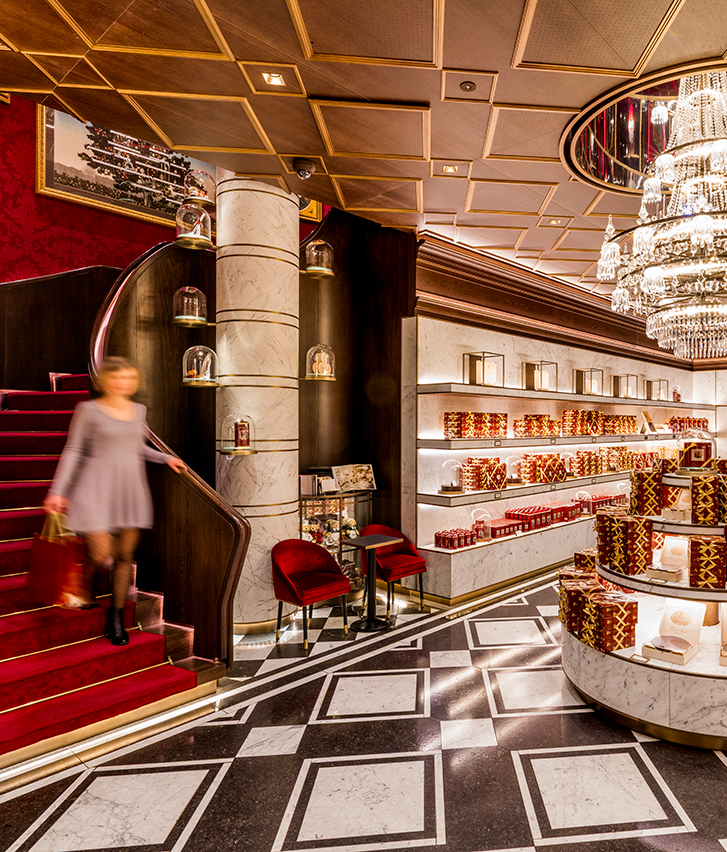
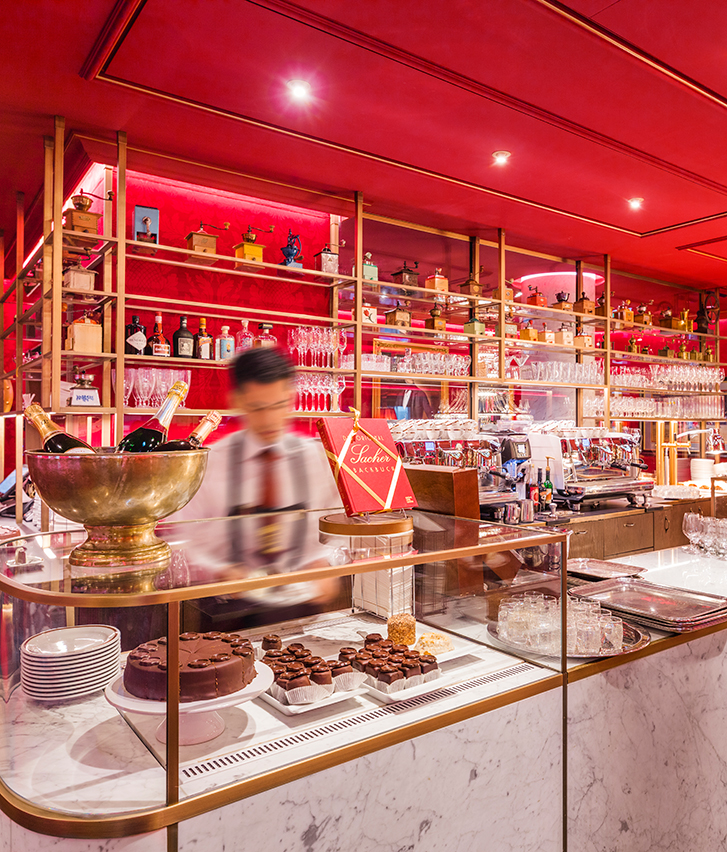
„That may sound like talent, but empathy is a lot of work.
Taking the effort to put yourself in someone else’s shoes.”
Taking the effort to put yourself in someone else’s shoes.”
Erich Bernard
Founder & Managing Partner BWM Designers & Architects
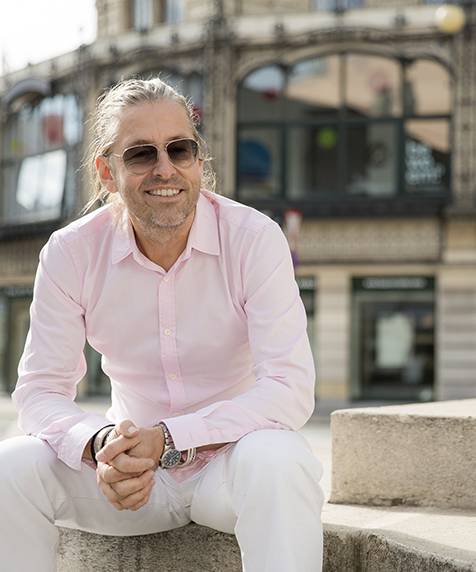
If there was no guiding image for Café Bel Étage, how did you approach it?
Erich Bernard
We looked at the ingredients that make up the Hotel Sacher. There is the black and white marble floor pattern, dark wood, a great deal of gold appearing as brass or gilding – and the red velvet. From these ingredients, we reassembled the Café Bel Étage. We emphasized the red velvet, saying: this is Sacher for us. This is the CI color. We then added elements that stylistically support the Viennese character, such as the crystal chandelier from Lobmeyr, which also has a historical link to the house.
In what way?
Erich Bernard
Sacher was home to the first electrified Lobmeyr chandeliers, built in the then-new downward-facing design, as dripping candles were no longer needed. In the Café Bel Étage, the chandelier now connects not only past and present but also both floors. To guide guests upstairs, we broke a hole in the ceiling and created a link with a two-story crystal chandelier. Below it now stands the archetypal element of the Sachertorte: white marble. Bakers love it for its porous character and coolness as a work surface, so as a material it makes absolute sense in context.
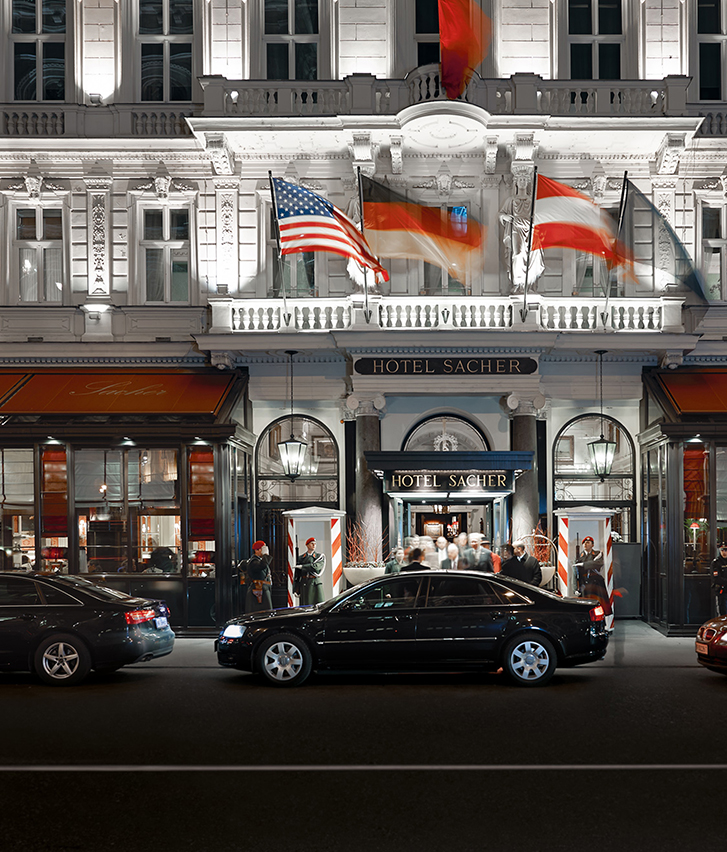

That sounds as narratively well thought out as at the Salon Sacher.
Erich Bernard
The process was still completely different, much more inductive. Many pieces of furniture had to be designed, countless details had to be considered. We had to zoom in again and again, building the big picture step by step. Inductive work can be very demanding.
How do you communicate something like that to clients?
Erich Bernard
We produced endless images and held almost weekly workshops – around 40 in total. But that’s typical for us. We engage deeply with people, immersing ourselves with them in the process. This applies especially to clients and operators, but also to the craftsmen – the product is truly created together. That’s why we always maintain close, open exchange. Everyone brings their knowledge and skills to the table. From that emerges a synthesis.
There’s a time-lapse video of the work at Café Bel Étage, showing the orchestrated build-up. Did you take on the role of conductor?
Erich Bernard
Definitely. But in such a complex project, many things came together that required great precision and coordination. Still, I’ve rarely experienced a construction site where the craftsmen prepared the process so meticulously. Josef Göbel handled the 3D planning, which ran very precisely, with no surprises afterward. Parts of the interior made by Josef Göbel were even preassembled in the factory in Fladnitz. We visited it several times with the Winkler family to fine-tune the benches and chairs, to test sitting. To make sure seat heights and fabrics really worked.
On that note: how do you assess the value of Austrian craftsmanship?
Erich Bernard
We often work on projects in Italy, where there are many skilled craftsmen, but hardly any good carpenters. They’re excellent at industrial prefabrication, but the full breadth of craftsmanship is found only in Austria – and especially often in the south, including Styria.
Earlier, you mentioned seat heights for benches and chairs. How do you define the famous human measure?
Erich Bernard
Not in the visual sense. For us, it can be summed up in one word: empathy. That may sound like talent, but empathy is a lot of work. Making the effort to put yourself in someone else’s shoes. In our projects, it very often comes down to the “unknown third party". In museums, that’s the visitor. In retail, the buyer to whom something must be conveyed: content, goods. For that, I need to engage with people, to anticipate what they might want and expect. In hospitality, it’s even more specific, much more dialog-driven. Here, understanding matters most, because nowhere else does the “unknown third party” stay longer. Their sense of well-being is central. That is always our paradigm number one: well-being!
How do you avoid repeating yourself?
Erich Bernard
By repeating. But we repeat the process, not the outcome. The more I engage with a place, the closer I look and the more I listen to clients, the more I recognize the differences. With existing architecture, history also plays a role, which we’re always happy to embrace. In the end, a place must develop its own identity. That is a constant in our hospitality work: every place should evolve an identity of its own and feel comfortable in its own way.

